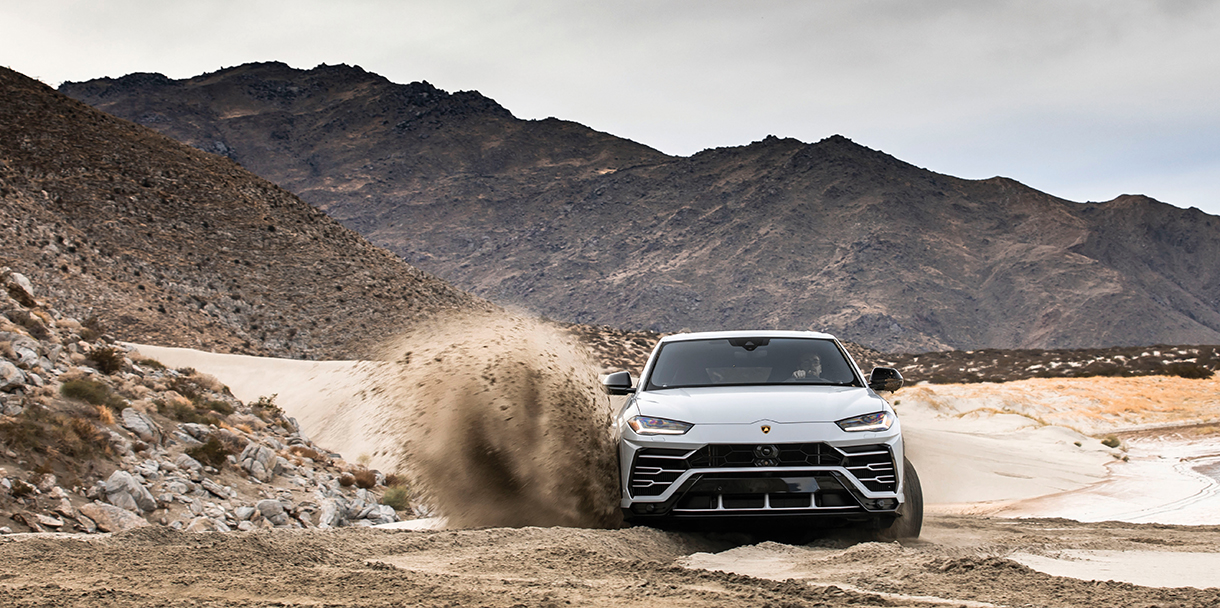
Crossover Super Sport
The Lamborghini Urus is the fastest SUV ever built.
As the first SUV from an Italian automobile maker known for its distinctive-looking sports cars since the rare truck-like LM002 (produced between 1986 and 1993), the Lamborghini Urus ($200,000; lamborghini.com) occupies a special slot among modern utes. Any doubts about compromises in performance are quickly erased as the Urus rockets down the Thermal Club race track in Palm Springs, California, to a stable cruising speed of 125 mph. Top speed is 190 mph but it’s the 3.6 seconds to 60 mph from a standing start that’s the most telling. It’s the fastest SUV ever built thanks to a V-8 twin-turbo engine that delivers 650 hp.
The nearby desert offers an off-roading opportunity that the Urus handles with aplomb. Equipped with active torque vectoring via a rear differential, the Urus is quick, agile, and easy to steer even when the sandy ground is shifting under the wheels. Three off-road modes are available: Terra (off-road), Sabbia (sand), and Neve (snow). All three raise the suspension to clear potential obstacles like melon- size boulders. The other three “Tamburo” driving modes—Strada, Sport, and Corsa—govern the 8-speed gearbox and conversely lower the chassis for better aerodynamics. Strada is at the quiet, daily- driving end of the spectrum while the track-oriented Corsa produces an appropriately bullish roar. A specially designed exhaust system varies the engine sound with changes in speed. A nice touch is the red flap over the start/stop button that mimics the launch control button found on track-minded sports cars.
The interior is well-appointed, as would be expected. But it’s the roominess that comes from applying sports car mathematics to a sport utility vehicle that impresses. While SUVs typically have high seating positions that can make a driver feel like he is floating in space, Lamborghini reversed course by lowering the seats to be closer to the Urus’ center of gravity, while also approximating the sight lines and seat dimensions of the brand’s Huracan supercar. The rear seats, in particular, are a revelation. “The rear bench is lower compared to the front bench,” notes Lamborghini chief technical officer Maurizio Reggiani, “which allows a passenger who is 6-foot-2 to sit comfortably.” All told, there is room for the starting five of a basketball team.
With a price tag that climbs toward $240,000 fully loaded, the Urus is for those sports car enthusiasts who some days need to be in a roomier vehicle but still require racing performance. Next up, an ST-X version—25 percent lighter than the street legal model and equipped with a steel roll cage and fire suppression system—will be the first Lamborghini to compete in both racetrack and off-road events in 2020.




